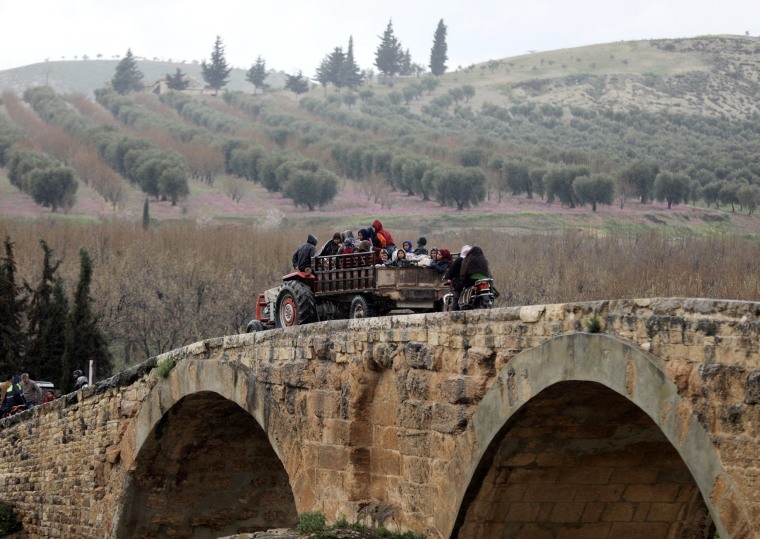
In Focus
Syrians flee besieged enclaves in largest single-day exodus
An estimated 42,000 civilians fled bombings Thursday from the Syrian military near Damascus and Turkish troops in the country's north.
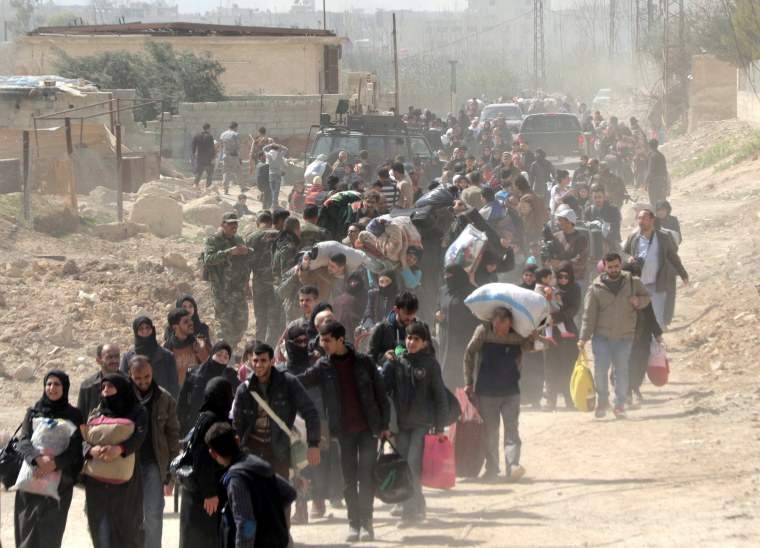
Men, women and children walk along a dirt road to army lines in Eastern Ghouta on March 15.
It was the largest single-day exodus of civilians from fighting in Syria's civil war and a reminder of how the conflict that sparked the world's worst humanitarian catastrophe continues to hit new lows as it enters its eighth year.
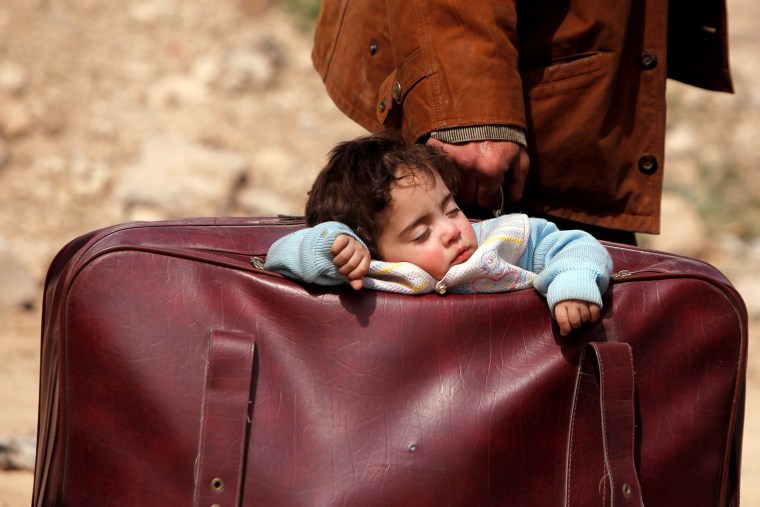
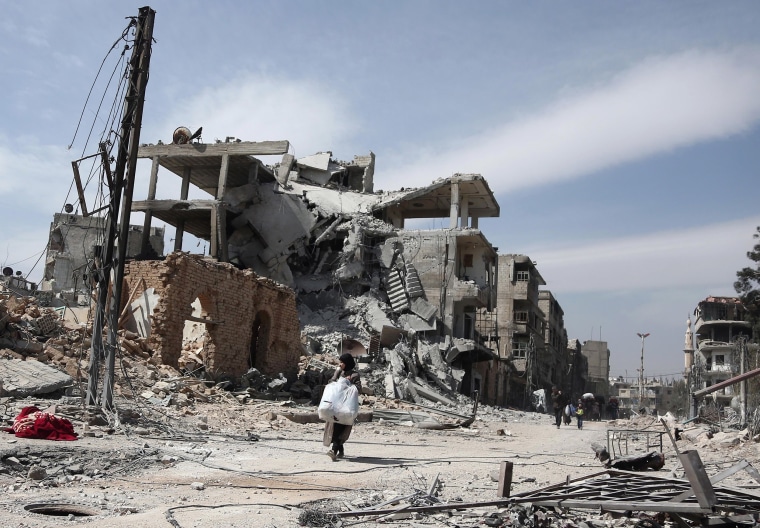
People carry their belongings as they flee from Hamouria.
Starting Wednesday night, intense shelling and aerial strikes paved the way for a ground advance on Hamouria, a town in the region's isolated southern pocket. It also triggered a mass exodus, unexpected in scale.
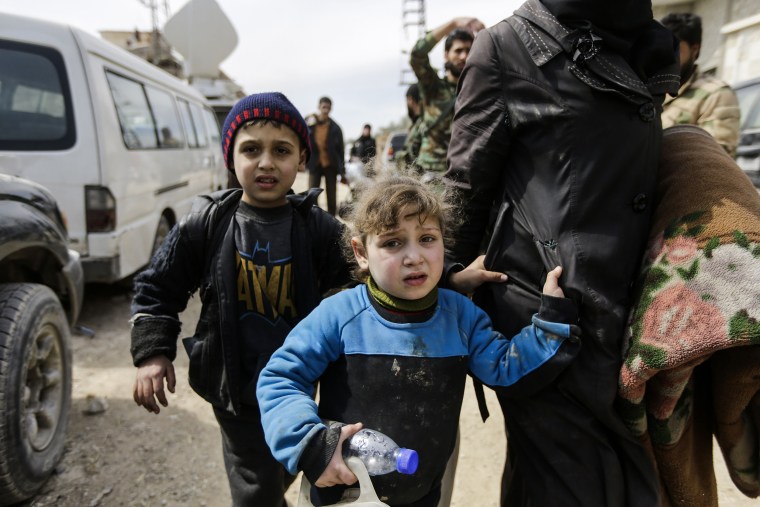
Children hold on to a woman's coat as they walk through the regime-controlled corridor opened by government forces in Hawsh al-Ashaari, east of Hamouria.
Since mid-February, Syrian troops have targeted the capital's sprawling eastern Ghouta region with shells, airstrikes and, at times, even toxic gas, according to opposition medics. They are now in control of the majority of the enclave that had been in rebel hands since 2012.

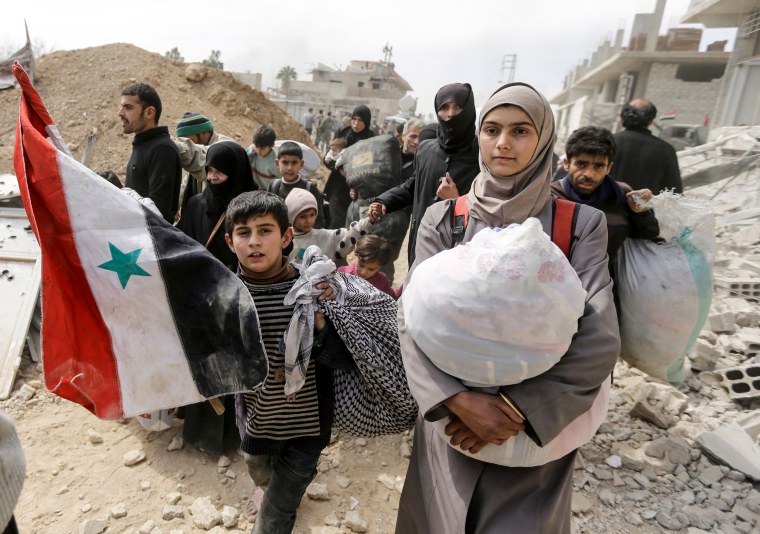

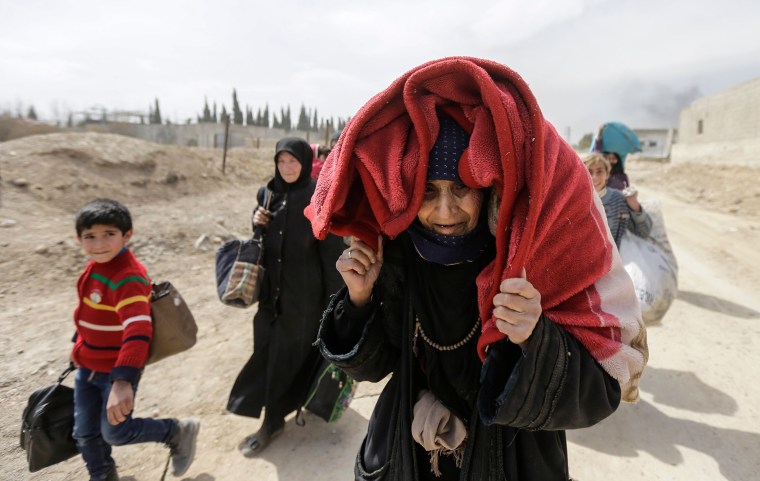
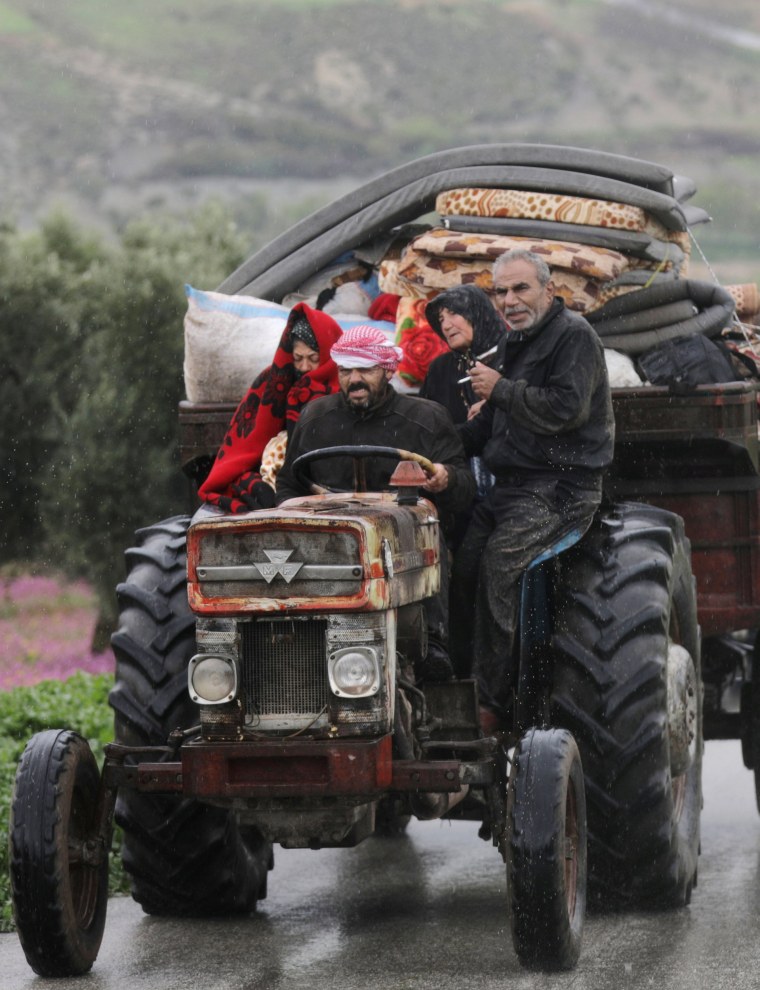
Thursday's civilian exodus underscored the intractability of a conflict that has invited world powers to stake out their spheres of influence in the fragmented country.
To the north, tens of thousands fled the Turkish military offensive on the Syrian Kurdish-controlled enclave of Afrin. Turkey considers the Kurdish militia a threat to its national security.

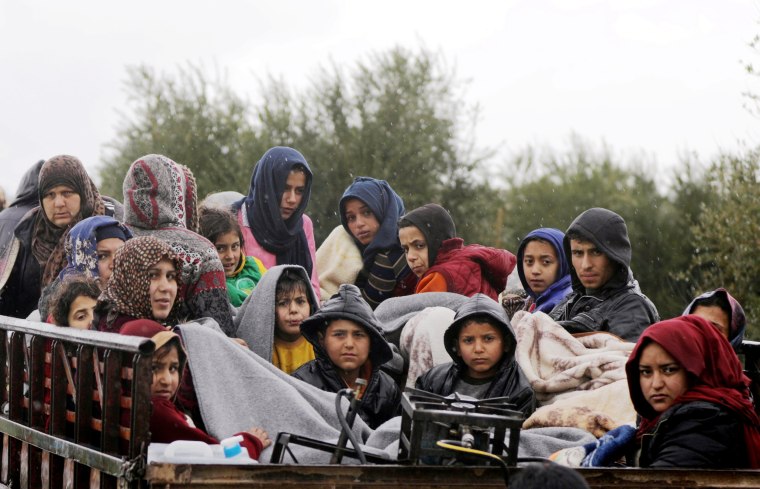
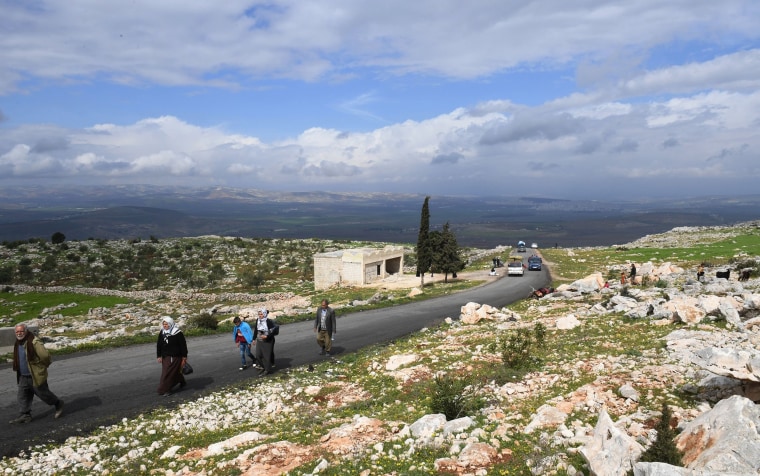
Civilians fleeing the Turkish military offensive in Afrin walk on a mountainous road in al-Ahlam. They were headed to Nubol, northwest of Aleppo.
Photos: Bombs dropped over eastern Ghouta bring region's deadliest days since 2015
